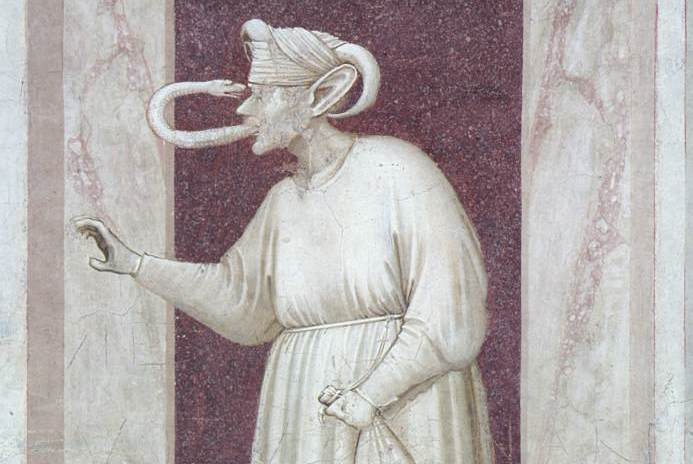
Are you old enough to remember Heaven’s Gate? On March 26, 1997, the San Diego County Sheriff’s department entered the Rancho Santa Fe compound in San Diego and discovered 39 dead bodies laid out on bunk beds. Wearing identical outfits, a square purple cloth covering their heads, the deceased had belonged to a religious cult called Heaven’s Gate. Members believed they were chosen to ascend to a “Higher Evolutionary Level.” To accomplish this, they were told they needed to leave their bodies, humanity, and the planet behind. When the Hale-Bopp comet came closest to earth, their leader assured them a spaceship would arrive to bring their souls to the “Next Level.”
The thirty-nine found were people of different ages and cultural backgrounds—successful businessmen, mothers who had left their families, pastors and nurses —some had been living together for twenty years. Eight of the eighteen dead men had elected to be castrated to be “more pure.”[1]
 This horrific ritual mass suicide provokes questions. What compels seemingly rational people to adopt wildly irrational beliefs? What makes us willing to forfeit our autonomy and agency and succumb to a set of rigid ideological or religious rules that cause harm to ourselves and others? In “Programming the True Believer,” a 2020 post on Psychology Today, Dr. Matthew J. Sharps considers three specific cognitive cult dynamics that could explain Heaven’s Gate: disassociation, group psychology, and cognitive dissonance.
This horrific ritual mass suicide provokes questions. What compels seemingly rational people to adopt wildly irrational beliefs? What makes us willing to forfeit our autonomy and agency and succumb to a set of rigid ideological or religious rules that cause harm to ourselves and others? In “Programming the True Believer,” a 2020 post on Psychology Today, Dr. Matthew J. Sharps considers three specific cognitive cult dynamics that could explain Heaven’s Gate: disassociation, group psychology, and cognitive dissonance.
In a 2017 interview, Benjamin Zeller, author of Heaven’s Gate: America’s UFO Religion and Assistant Professor of Religion at Lake Forest College, speculates that “The same demographic forces (that helped spawn Heaven’s Gate) are still at work. People are looking for truth, meaning, community, and not finding it in existing religions. So, they look for new ones or form their own.”[2]
The Heaven’s Gate suicide pact was extreme, shocking, and unique. However, in our own struggles with powerful impulses and destructive behaviors we may recognize the phenomenon of self-sabotage. Self-sabotage is when we consciously or unconsciously act against our own best interests, harm ourselves emotionally or physically, and block our way to success. In “Self-Sabotage: How to Recognize and Conquer It,” a 2020 Psychology Today post, Dr. George S. Everly helpfully identifies eight self-defeating patterns.
Often, we frame our struggle with self-sabotage as an inner battle between a good part of ourselves and a bad part, a part we feel helpless to change, as with addiction. Instead of a bullying cult leader, we face an internalized commando, a severe critic, or a self-defeating behavior or attitude.
Early in the last century, Sigmund Freud experimented with hypnosis to delve into his patients’ unconscious minds, hoping to uncover and release repressed memories of trauma. His student and later rival, Carl Jung, devised a method of self-interrogation called Active Imagination in which a person dialogues with a dream or visionary figure to gain access to its revelatory knowledge.[3]
Later, Fritz Perls contributed his theory of Gestalt therapy to psychotherapy. One method used by Gestalt therapists is the empty chair technique. A client sits across from an empty chair and dialogues with a part of herself or himself or with another person, like a parent.[4]
 Each of these approaches supports a holistic attitude toward the Self: we are more than what we consciously know about ourselves, and we are more than our parts. As Walt Whitman famously wrote: “I contain multitudes.”
Each of these approaches supports a holistic attitude toward the Self: we are more than what we consciously know about ourselves, and we are more than our parts. As Walt Whitman famously wrote: “I contain multitudes.”
Today, the Internal Family Systems (IFS) therapeutic model builds on the work of these early psychoanalytic pioneers. IFS theorizes that we embody “parts,” sub-personalities or families within our mental system, which vie for power and attention.
In IFS practice, no part is labeled “bad” but is understood as acting to protect a more vulnerable part. However difficult our struggles and no matter what destructive actions we have perpetrated, uncovering the vulnerable part, honoring its experience and feelings, and giving it a voice is a crucial aspect of the work.
The Internal Family Systems Institute website lists their stated principles:
- It is the nature of the mind to be subdivided into an indeterminate number of subpersonalities or parts.
- Everyone has a Self, and the Self can and should lead the individual’s internal system.
- The non-extreme intention of each part is something positive for the individual. There are no “bad” parts, and the goal of therapy is not to eliminate parts but instead to help them find their non-extreme roles.
- As we develop, our parts develop and form a complex system of interactions among themselves; therefore, systems theory can be applied to the internal system. When the system is reorganized, parts can change rapidly.
- Changes in the internal system will affect changes in the external system and vice versa. The implication of this assumption is that both the internal and external levels of our system should be assessed.[5]
We can’t know what drove the individuals who participated in Heaven’s Gate to commit ritualistic suicide. We can conjecture it was some combination of external brainwashing techniques, unconscious longings, and existential needs. Beliefs dictate action. A complex web of dysfunctional and distorted beliefs no doubt contributed to the participants’ fatal capacity for self-sabotage. We might say that in seeking to evolve spiritually to a higher level, they lost touch with what was available to them within. This reminds us that we must understand and accept that we are not creatures locked into the binary labels of good or bad, but complex, nuanced, ever-evolving beings striving for unity and wholeness.
Addendum: As a writing exercise, find a picture of your child or teenage self. Sit with it in silence and gaze into the child’s eyes. What do you see? What message does that child want to tell you? Write in your journal for fifteen minutes without stopping.
References
[1] Dan Weisman, “26 Years ago, Heaven’s Gate Couldn’t Wait,” Escondido Grapevine, January 23, 2023
[2] John Wilkens, “20 years later, Heaven’s Gate lives on — via internet, scholarly debates” San Diego Union-Tribune, March 18, 2017
[3] “What is Active Imagination?” on carl-jung.net
[4] Dr. Ryan Howes, “Cool Intervention #9: The Empty Chair,” Psychology Today, January 20, 2010
[5] The Internal Family Systems Model Outline on IFS-Institute.com
This post appeared in a slightly different form on Dale’s blog on Psychology Today. You can find all of Dale’s blog posts for Psychology Today at